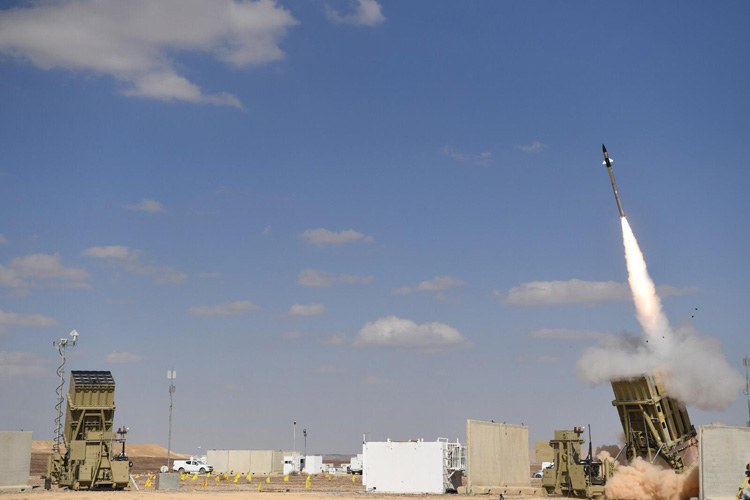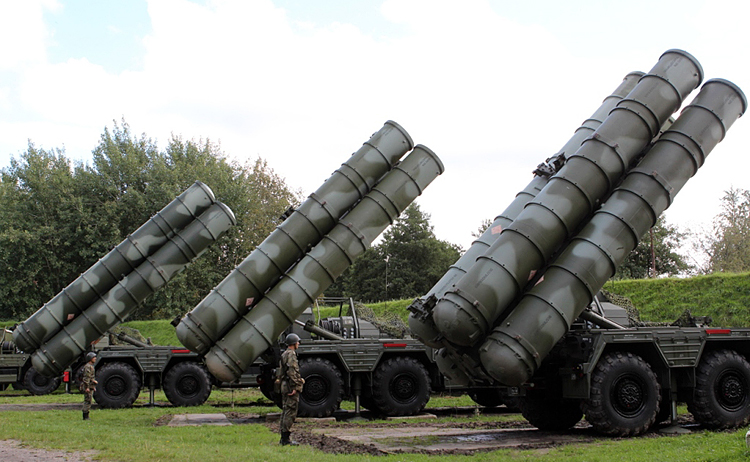INDIAN ARMED FORCES CHIEFS ON
OUR RELENTLESS AND FOCUSED PUBLISHING EFFORTS

SP Guide Publications puts forth a well compiled articulation of issues, pursuits and accomplishments of the Indian Army, over the years

I am confident that SP Guide Publications would continue to inform, inspire and influence.

My compliments to SP Guide Publications for informative and credible reportage on contemporary aerospace issues over the past six decades.
Guarding Indian Skies with Project 'Kusha'
DRDO unveils 'Kusha' project with the aim to craft a robust indigenous air defence system with LR-SAM capability by 2028-2029
 |
The Author is Former Director General of Information Systems and A Special Forces Veteran, Indian Army |

News reports of October 30, 2023 disclosed that India is developing its Desi (indigenous) version of Israel's 'Iron Dome' air defence missile system. The Project named 'Kusha' aims to equip India with a robust air defence missile system capable of detecting and neutralising incoming threats. The Defence Research and Development Organisation (DRDO) is spearheading the project which is scheduled to be deployed by year 2028-2029. The indigenous Long Range Surface-to-Air Missile (LR-SAM) system is designed to perform tasks akin to Israel's 'Iron Dome' system.
The recent challenge faced by Israel's 'Iron Dome' underscores the importance of having a robust air defence. 'Kusha' seeks to address these concerns, ensuring a deep arsenal and cost-effective solutions in the face of evolving threats.
Project 'Kusha' envisages a system equipped to detect and destroy a range of threats, including stealth fighters, aircraft, drones, cruise missiles, and precision-guided munitions (PGMs). It is expected to have an operational range of up to 350 km. The system reportedly would have long-range surveillance and fire control radars, with multiple interceptor missiles capable of hitting hostile targets at distances of 150 km, 250 km and 350 km.
Kusha is a joint effort between the DRDO and both private, as well as the public sector industries. This versatile and powerful system is being designed to provide strategic and tactical defence for vulnerable areas, with the ability to target high-speed threats possessing low radar cross-sections. The system's planned capability to intercept fighter-sized targets at a range of 250 km and larger aircraft, like the Airborne Warning and Control Systems (AWACS) and mid-air refuellers at a range of 350 km makes it a formidable defensive asset.
India presently has the short-range 350-km Prithvi to the long-range Agni-5 having 5,000 km range. But the requirement is also to have an assured defensive system to protect the country from high-speed missiles with conventional or nuclear warheads. The US has Advanced Patriot, THAAD and AEGIS anti-missile systems deployed on various locations. Russia has deployed its most advanced S-400 anti-missile systems and is developing the S-500. Similarly, Israel has deployed Iron Dome and ARROW anti-missile systems.
Project 'Kusha' targets a wide array of threats, from stealth fighters to drones and cruise missiles, boasting an operational range of up to 350 km
China has long-range ballistic missiles of up to 12,000 km range and is also transferring its medium-range ballistic missiles to Pakistan. The ability of China to launch missiles at India and force the Indian Air Force (IAF) to invest large resources to neutralise such threats, points to the need for high-tech and precision-guided air defence systems. India, therefore, went in for the acquisition of five Russian S-400 anti-missile systems at a cost of $5.25 billion. Three S-400 anti-missile systems have already been procured and deployed along the northern borders. For Project Kusha, the Ministry of Defence (MoD) has sanctioned five LR-SAM squadrons worth 21,700 crore (approximately $2.5 billion). These anti-missiles can tackle any aerial target, whether a missile or aircraft, at the maximum range of 350 km.

As part of Project Kusha, the indigenous LR-SAM will include interception capabilities comparable to the Russian S-400 Triumf air defence system. Moreover, with its single-shot kill probability, it is anticipated to achieve an 80 per cent or higher success rate for single missile launches and not less than 90 per cent for salvo launches.
The Israel Defense Forces' (IDF) Iron Dome is a network of batteries using radars to detect incoming short-range rockets. Each battery is equipped with three or four launchers, 20 missiles, and a radar system. When a rocket is detected, the Iron Dome system assesses whether it poses a threat to populated areas and then launches an interception missile to neutralise the threat. Reports suggest that the Iron Dome is approximately 90 per cent effective in intercepting rockets, but it can become overwhelmed in the face of a mass barrage of rockets, allowing some to evade interception.
With the Ministry of Defence's sanction of 21,700 crore for five LR-SAM squadrons, 'Kusha' aims not just for efficacy but also cost-effectiveness in air defence investments
Israel's state-of-the-art 'Iron Dome' air defence system, hitherto considered nearly impenetrable, faced its worst challenge on November 7, 2023, when Hamas, the Palestinian militant group, launched a barrage of almost 5,000 rockets in just 20 minutes. The system did provide a considerable level of protection for Israel, perhaps to the best of its capability, but many rockets did get through to hit Israel. This has raised apprehensions and many questions, especially in the contingency where one or more enemy nuclear missiles can evade the system and strike us. The futility of such expensive air defence systems also came under the scanner.
Media reports have quoted an apt comment by Ian Boyd, American Aerospace engineer, who said, "The Hamas attack will have repercussions for all of the world's major military powers. It clearly illustrates the need for air defence systems that are much more effective in two important ways. First, there is the need for a much deeper arsenal of defensive weapons that can address a very large number of threats. Second, the cost per defensive weapon needs to be reduced significantly."
India is acquiring five S-400 Triumph air defence systems at a cost of $2.5 billion. In addition, Project Kusha is to provide five squadrons of LR-SAM, also at an estimated cost of $2.5 billion. Shouldn't the cost be reduced by making more such systems? Can 5 x S-400 and five indigenous LR-SAM systems meet our total national requirements, although India reportedly is also looking at the American NASAM system for protecting the national capital?
Finally, the challenge will be the Chinese concept of 'swarm attacks', which may amount to multiple barrages, much more than what Israel is facing.





